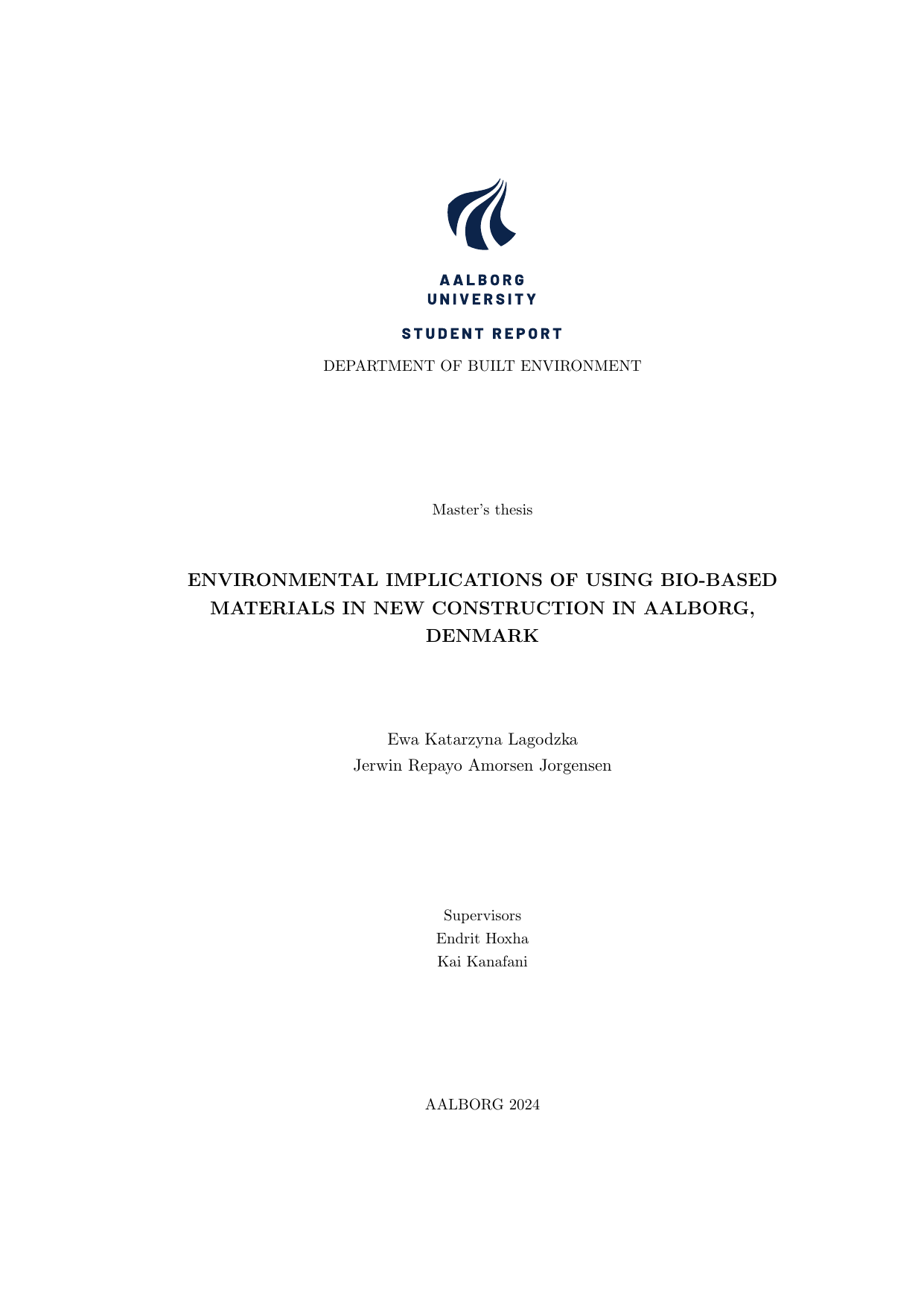
Environmental Implications of Using Bio-based Materials in New Construction in Aalborg, Denmark
Term
4. Term
Education
Publication year
2024
Submitted on
2024-01-11
Abstract
This report aimed to identify the environmental implications of mineral-based construction, timber-based construction, and bio-based construction in four case buildings: single-family house, terraced house, multi-story building, and office buidling. In order to get the results, multiple methods were used such as interviews, LCA calculation with the use of LCAbyg, and carbon storage calculations. The research showed that mineral-based construction has the highest Global Warming Potential, meanwhile, bio-based construction consisting of timber structure and meadow grass insulation has consequently the lowest impact. The results indicated that in order to build only with the bio-based construction, Aalborg would require 85 411 m³ of timber per year, which is equivalent to a yearly harvest of 3.95 km² of the forest or 197.5 km² during 50 years for the sustainable cycle. Moreover, the results showed that building with bio-based construction could store 56 513 tonnes of CO2 equivalents from yearly construction. It was concluded that bio-based materials are a promising solution for lowering the environmental impact and sequestering carbon, however, they require changes to more sustainable sourcing methods.
Keywords
Documents
